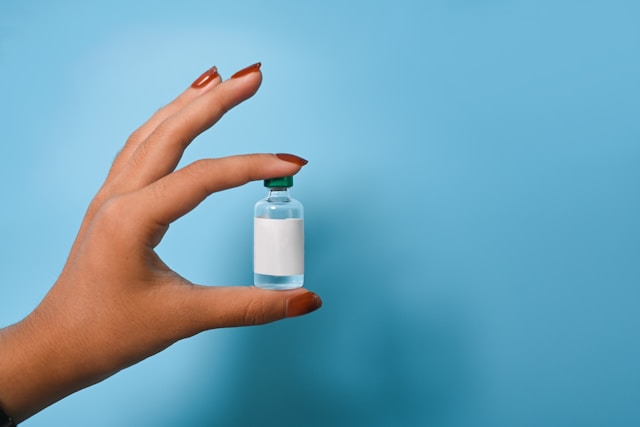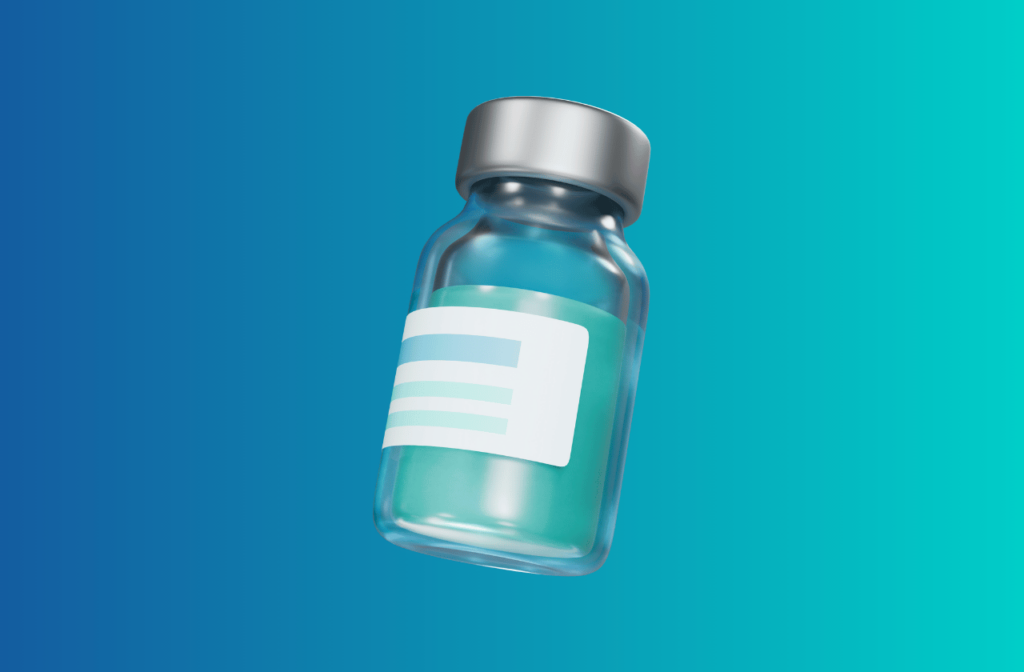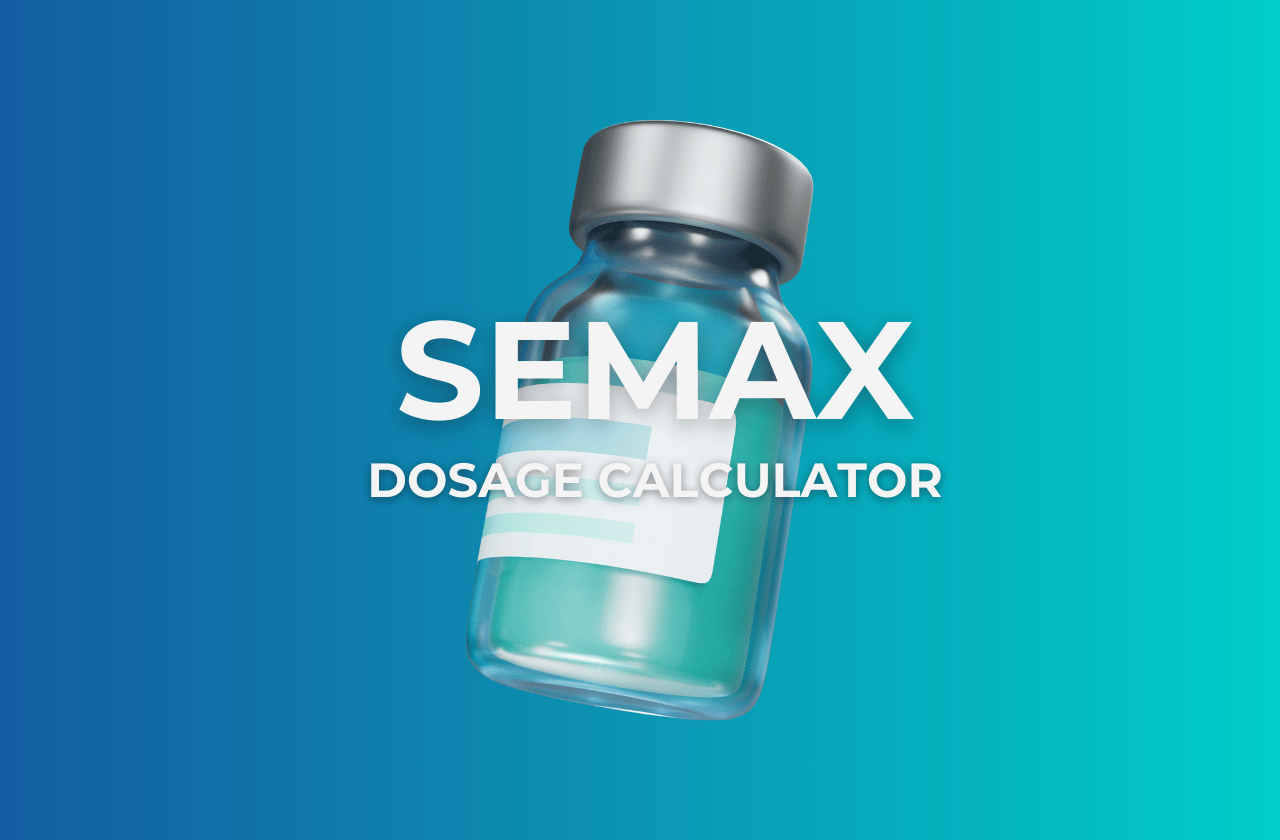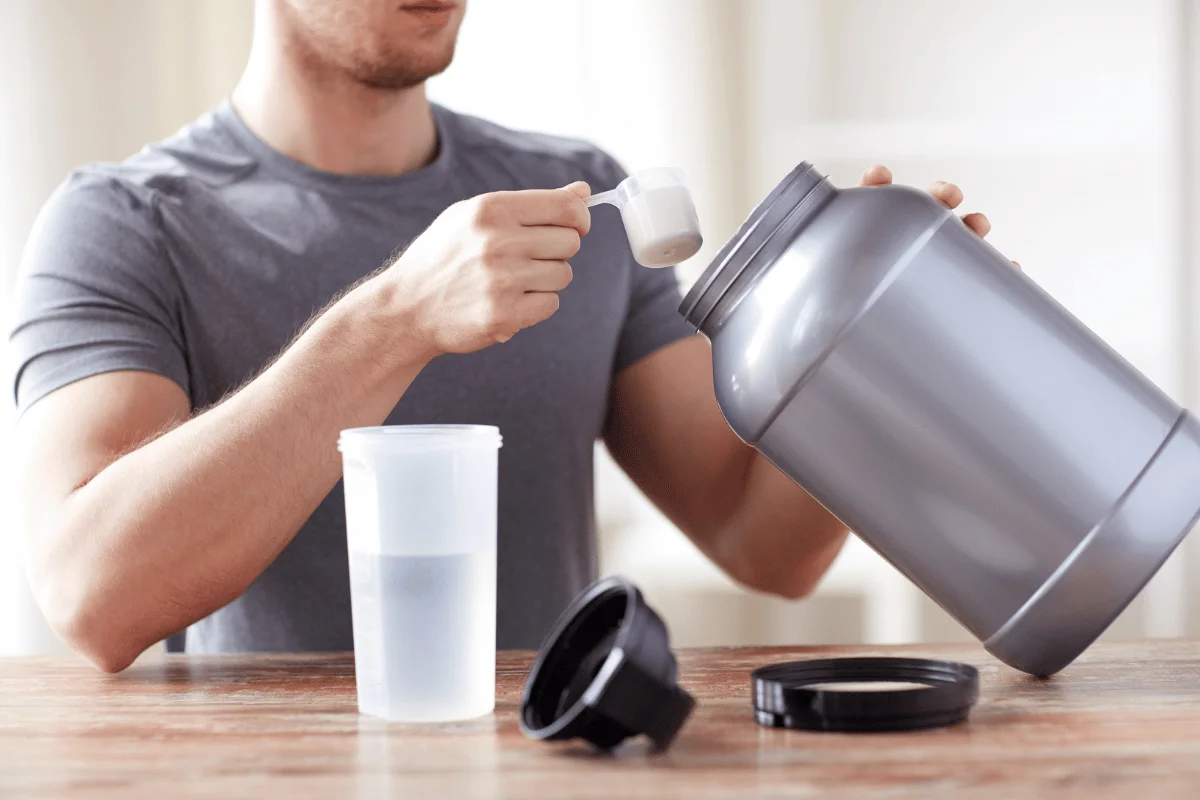[Disclaimer: This article is for informational purposes only and does not constitute medical advice. Always consult with a qualified healthcare provider before starting any peptide therapy.]
Semax is a synthetic peptide drug created in Russia from adrenocorticotropic hormone (ACTH). Known mainly for its neuroprotective and cognitive-enhancing properties, Semax has drawn interest for its potential benefits for cognitive function and mental clarity.
This Semax peptide dosage guide covers proper dosing for different uses of Semax based on current research and clinical practices, including dosing charts and an interactive reconstitution calculator.
Always use Semax under medical supervision of a healthcare professional, as responses vary from person to person.
What is Semax?
Semax is a heptapeptide (MEHFPGP) created by scientists at the Russian Academy of Sciences. It works by triggering the release of brain growth factors, especially brain-derived neurotrophic factor (BDNF) and NGF, while affecting neurotransmitters like dopamine and serotonin.
In Russia and Eastern Europe, doctors prescribe Semax for stroke, memory problems, brain injuries, and cognitive issues. Some people also use it off-label as a nootropic to boost brain function, but it is recommended to consult with a healthcare professional before considering it for brain health.
Semax Dosage Calculator (Reconstitution)
Peptide Reconstitution Calculator
What is the total volume of your syringe?
Select Peptide Vial Quantity
How much bacteriostatic water are you adding?
Concentration: 5.000 mg/mL (5000 mcg/mL)
How much of the Peptide do you want in each dose?
Draw up: 0.010 mL to get 50 mcg
Insulin syringe: 1.0 units (if using a U-100 syringe)
To have a dose of 50 mcg pull the syringe to 5
Administration Methods
Semax is primarily administered through two routes:
Intranasal Administration
The most common administration method for Semax is via nasal spray or drops, allowing for direct absorption through the nasal mucosa.
Approximately 60-70% of the active substance is absorbed through this route, rapidly distributing to organs and tissues while effectively penetrating the blood-brain barrier.
Subcutaneous Injection
Less commonly, Semax may be administered via subcutaneous injection, particularly for specific therapeutic protocols such as post-stroke treatment.
Semax Dosage Chart
Intranasal Administration Dosages
| Purpose | Dosage | Frequency | Duration |
|---|---|---|---|
| General Use | 300-600 mcg | 1-3× daily | 3-14 days |
| Cognitive Enhancement | 600-1200 mcg | 1-2× daily | 10-14 days |
| Neuroprotection | 1000-3000 mcg | 1-2× daily | 10-16 days |
| Mild-Moderate Stroke | 2000-3000 mcg | 3-4× daily (3-4 hour intervals) | 10 days |
| Severe Stroke | 3000-4000 mcg | 4-5× daily (2.5-3 hour intervals) | 10 days |
Note: For nasal administration, one drop typically contains approximately 50 mcg of active substance in standard formulations. The typical spray delivers 500 mcg per pump in 1% concentration solutions.
Subcutaneous Injection Dosages
| Purpose | Dosage | Frequency | Duration |
|---|---|---|---|
| General Use | 0.5-1 mg (3-5 units) | Once daily (morning, fasted state) | As prescribed |
| Post-Stroke | 1 mg (5 units) | 4× daily | 10 days |
Condition-Specific Dosing Protocols
Cognitive and Memory Enhancement
- Memory impairment: 3 drops in each nostril 2 times daily for 10 days; recommended 2 courses per year
- Working capacity improvement: 3 drops in each nostril 2 times daily for 10 days; recommended 1-2 courses per year
Neurological Conditions
- Chronic cerebral ischemia: 3 drops in each nostril daily for 16 days; recommended 2-4 courses per year
- Stroke prevention: 3 drops in each nostril 2 times daily for 10 days; recommended 2 courses per year
- Recovery after stroke: 4 drops in each nostril 6 times daily for 16 days
- Prevention of repeated strokes: 3 drops in each nostril 3 times daily for 16 days; recommended 2-3 courses per year
Specialized Applications
- Craniocerebral trauma recovery: 3 drops in each nostril 3 times daily for 16 days; second course recommended after 6 months
- Glaucoma/optic nerve conditions: 2 drops in each nostril 3 times daily for 20 days; recommended 2-4 courses per year
Third-Party Tested, 99% Purity
Order lab-verified peptides from our top recommended vendor.

Concentration Information
Semax nasal preparations typically come in the following concentrations:
- 0.1% solution (standard concentration)
- 1% solution (stronger concentration for specific conditions like stroke)
One standard bottle contains approximately 70-75 drops, sufficient for a 3-10 day course depending on the dosing regimen.
Administration Guidelines

Nasal Spray Administration
- Tilt head back slightly
- Insert spray nozzle or dropper into nostril
- Administer prescribed dose
- Allow solution to absorb through nasal mucosa
For faster onset and more pronounced effect, a second dose can be taken 15 minutes after the first one.
Reconstitution Instructions (For Lyophilized Forms)
- 10mg vial: Inject 0.5ml of bacteriostatic water (equals 50 units)
- 40mg vial: Inject 2ml of bacteriostatic water (equals 200 units)
Potential Side Effects and Cautions
Semax is generally well-tolerated with minimal reported side effects. However, potential effects may include:
- Mild irritation of nasal mucosa with prolonged use
- Possible increased anxiety in some users
- Research in animals suggests potential pro-oxidant effects at very high doses
Contraindications
Semax should be avoided in cases of:
- Hypersensitivity to components of the drug
- Acute psychotic states
- Disorders accompanied by anxiety
- Endocrine system diseases
- Pregnancy and lactation
- Children under 18 (except where specifically prescribed for conditions like ADHD)
Interaction with Other Drugs
Due to intranasal administration, it is not advisable to use Semax concurrently with other intranasal medications that have local vasoconstrictive effects.
Takeaway
Semax represents a unique peptide-based approach to cognitive enhancement and neuroprotection. While established in Russia and Eastern Europe for various neurological conditions, it remains investigational in many other countries.
The dosing guidelines presented here reflect current usage patterns based on clinical applications in regions where it’s approved for medical use. As with any bioactive compound, individual responses may vary, and appropriate medical supervision is recommended, particularly for therapeutic applications.








